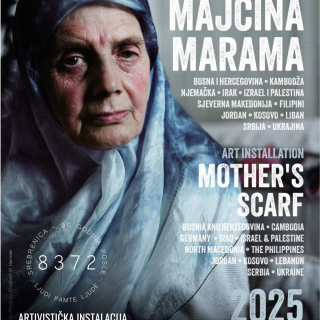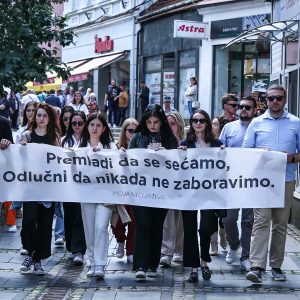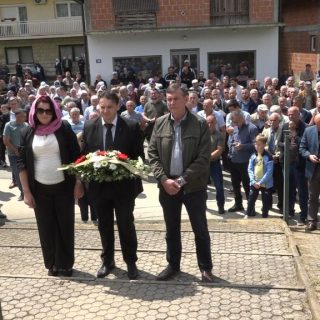Forgetting and remembering are two of the main concerns of being-in-the-world. At least this is what Milan Kundera states in his novel “The Book of Laughter and Forgetting“. In the same way, writer Primo Levi in the existential-phenomenological expression of Auschwitz tells us that ‘memory is a marvelous but fallacious instrument‘, and this is as a result of the non-singularity of the story about the event we experience. Therefore, according to Levi, narratology does not penetrate the traces that the experience of the event carries. It seems that literature as our ‘ethical laboratory’ (Ricoeur) always tries through the ecstasy of existence to challenge any narratological reading about a certain historical context. This seems to be the curse of narrative world history that will always be held hostage to the relentless competition to produce the fable believed to be ‘the truest.’
But it seems to me that the only instance that gives a kind of legitimacy to the narrative identity, if we have to use this legal discourse, are phonotopes or aural spaces. This finding results from two propositions that the phonotope contains in itself: 1) it is the existential aspect of delineating the poetic image of the event [ereignis] and 2) it is the political-ethical aspect of the expression of res-societas. Thus, being similar to our anthropological islands, the phonotope as narrative identity lends these two important aspects of its expression. Another important aspect is that phonotopes belong to the festival as a form of sociability, as Attali would say. They do not belong to the church, which have the institutions as an extension. On the contrary, they are related to the institutions but are not defined by them. The festival as a [vox loci] form of sociability is important for aural spaces because it helps a lot to capture the stratifications located in different discursive practices, but at the same time it highlights the development of micro-historical and micro-social dynamics. Also, the dominance of some narratives against the silence of some others is drawn there.
Folk vs Alternative
The two main phonotopes that prevailed during the apartheid period in Kosovo in the 90s were: oda and cafeteria. Perhaps the metaphor that best represents these phonotopes is found in the text of philosopher Astrit Salihu “Beavis and Butthead and Mic Sokoli.” The first is a hero of mass-culture and hyper-reality while the other is a romantic hero of the atavistic ethos. We must say that this examination is modest and not exhaustive, but you will find its expanded version in other texts.
Now, let us turn to the analysis of ‘oda’. It is related to the folk culture that simultaneously aims for a conceptual coherence about that necessary identity or what is known as the ideality of the national being. ‘Oda’ has always symbolized a kind of shield that has conserved some values related to being Albanian and a heroic variant of Albanianism. It has marked homogeneity or hypersymbolic discourse (Todorov) for the ‘national bank of patriotism’ (Limani). If we are to use a parable, we could find the same manifestations in other cultures, recalling Heidegger’s treatise of the place that is closely related to the hut [Hütte] as a kind of authentic shield of being. ‘Oda’ as a phonotope and as an aural space has tried to maintain a sonoristic integralism through interpretation with the musical instrument known as ‘çifteli’, with debates through raising the voice. All of these have served as a shield against the inauthentic life dynamics represented by the noise of the megalopolis or city. This shield could be read in two ways: 1) as a kind of resistance for the construction of narrative against Serbian colonialism and 2) in the regressive or weakened variant of a kind of rejection of the monk through the folk ferment towards the western culture and in the context of the 80s and 90s was related to the rock culture or to the new forms of expression of Techno that had begun to manifest in the parties or the so-called “zhurka-s” of the city.
Cafeterias or “cafes” mark the conceptual knot of the political-cultural and existential expression of the inauthentic life and living in the city. And the city as something democratic that opens its arms to all those who intend to build a new life in it, as in the refrain of the “Gjurmët” song ‘… ‘…eja të shkojmë në Prishtinë… me çika të mira t’rrijmë’, thus showing its nocturnal side, from the sound of sewage when it rains in the city to the acoustic noise of cars that form the eternal chorus of the whole city. The authentic revolt for something inauthentic is expressed to us in psycho-acoustic form because our experience of the city as long as we spend years in it does not seem to be ours; but at the same time it happens that the city becomes another’s.
Cafeterias or ‘cafes’ are an integral part of the narrative of the city. In the 90s, at the place known as “Kurriz” in Prishtina, there were the most representative ones such as: Hani i 2 Robertëve, Boys and even Papillon. If we talk on the level of the semiosphere, its markers and referents are: rock music, Levi’s 501 jeans, gin tonic, coca-cola, LPs, tapes, music studios and even MTV. In the 90s they maintain the parallel polis. The main character of the parallel polis is that of the rocker journalist who has a cynicism refined by Alan Ford. He is found in the political noise with his discussion with foreign diplomats and journalists, but at the same time through discreet charm as in Bunel’s film he has to create a narrative identity that is immanent criticism of totalitarianism. Cafeterias as aural spaces have also cultivated the taste of those who have visited them. There, through the speakers, you entered a new adventure of sonoristic ecstasy. By listening to music you have begun to unravel some knots about what you represent in the life-world [lebenswelt]. It has simultaneously built your cultural and existential identity. In addition to discussing politics and meeting diplomats, cafeterias have been a kind of protective zone against kitsch in art and ‘political kitsch’ (Bobi) but we must emphasize that they have also created the layer of provincial snobbery and ‘urban mimicry’ (Salihu) that we would see it rise after the war.
After the war in Kosovo, these are the phonotopes that dominate, even though this first one is slowly being extinguished by the annihilating power of eros 0 and 1. The gap between them remains the same and the thing that unites them are the anthropovirtual islands of cyberspace where their islanders have already migrated in the technosphere (Land/Paic). Let’s do an intervention for the city, because in it the cry is still heard as in Lyotard’s syntagm for homo re-domesticus ‘because you are not one of us’, persecuting (anathematizing and stigmatizing) someone who migrates. The city is imperfectly democratic so we will never be able to own it. And when we talk about the sonoristic ghost that, like Derrida, haunts Prishtina, we only have to remember the verse of the song by the band PMG Kolektiv “the 90s, You and Me.”
Labinot Kelmendi is a philosopher coming from Prishtina. He earned his MA in Philosophy from University of Prishtina, Faculty of Philosophy, Department of Philosophy, and is currently pursuing his PhD in Philosophy at the Faculty of Philosophy of the University of Zagreb. Presently, he serves as an assistant in the Faculty of Philosophy (Department of Philosophy) and the Faculty of Arts. Additionally, he holds a position on the presidency of the Kosovo Philosophical Association. From 2015 to 2021, he co-authored Kosovo’s first philosophical telecast, “Filozofema,” aired on Radio Television of Kosovo (RTK). He chairs the International Inter- and Trans-Disciplinary Symposium for Philosophy, Art, and Technology, known as “Filozofema.” Beyond academia, he actively engages in the cultural realm, initially as a member of various bands and alternative music projects, including the popular “Madgod” and “Elektorati Intelektual.” Subsequently, he contributed articles to the “Cineks” platform, offering critiques on local films and serving as curator and art critique for the drawing biennial and other exhibitions.




